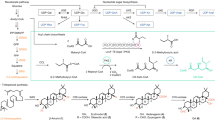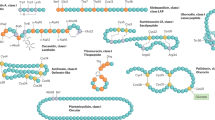Abstract
The Institut Pasteur was created, thanks to worldwide generosity with the aim to welcome and treat rabies patients, to provide a place for scientific research and to offer new teaching programs in microbiology. Louis Pasteur invited his main collaborators, who had accompanied him during his previous investigations at École Normale Supérieure, to join him in his new institute. They contributed to the principle discoveries of Pasteur, such as the fight against spontaneous generation, the identification of the ferments of putrefaction, the fight against the silk worm disease, the research on wine and beer, and the set-up of the first vaccines against avian cholera, anthrax, swine erysipelas, and rabies. There were two scientists, Émile Duclaux and Charles Chamberland, and two medical doctors, Émile Roux, and Joseph Grancher. In addition, two Russian scientists were invited to join the Institute and to head a research laboratory, Élie Metchnikoff and Nikolaï Gamaleïa; the later will finally never join the institute.
This is a preview of subscription content, access via your institution
Access options
Subscribe to this journal
Receive 6 digital issues and online access to articles
$119.00 per year
only $19.83 per issue
Buy this article
- Purchase on Springer Link
- Instant access to full article PDF
Prices may be subject to local taxes which are calculated during checkout







Similar content being viewed by others
Notes
Saint-Petersburg, Odessa, Moscow, Varsaw, Torino, Milano, Palerma, Napoli, Wien, Barcelona, Bucharest, Malta, Constantinople, La Havana, Rio de Janiero, Buenos Aires, Chicago
References
Diday CP. Sur un procédé de vaccination préservatrice de la syphilis constitutionnelle. Gazette Médicale de Paris, Série 3, No. 4; 1849, p. 751–5 & 770–7.
Grancher J. (Discours) Inauguration de l’Institut Pasteur; 1888 (Special Issue) p. 9–26.
Legout S. The “Annales de l’Institut Pasteur”, 1887-2007: a glimpse into history. Res Microbiol. 2008;159:23–26.
Inauguration de l’Institut Pasteur. Ann Inst. Pasteur. 1888;2:5–30.
L’institut Pasteur. Ann Inst. Pasteur. 1889;3:1–14.
Cavaillon J-M, Legout S. Centenary of the death of Elie Metchnikoff: a visionary and an outstanding team leader. Microbes Infect. 2016;18:577–94.
McIntyre N. The fate of Rose Anna Shedlock (c1850-1878) and the early career of Émile Roux. J Med Biogr. 2016;24:60–67.
Perrot A, Schwartz M. Pasteur et ses lieutenants: Roux, Yersin et les autres (Odile Jacob Publisher); 2013.
Morange M. What history tells us V. Emile Duclaux (1840–904). J Biosci. 2006;31:215–8.
Pasteur L. De l’extension de la théorie des germes à l’étiologie de quelques maladies communes. Bull Acad Med. 1880;9:435–47.
Moissinnac C. Émile Duclaux: De Pasteur à Dreyfus (Coll. Histoire des Sciences) Hermann; 2015.
Cassier M. Producing, controlling and stabilizing Pasteur’s anthrax vaccine: creating a new industry and a health market. Sci Context. 2008;21:253–78.
Ramon G. La découverte de la toxine diphtérique et ses consequences. Hommage à Émile Roux Bull Acad Nat Méd. 1953;137:516–7.
Cavaillon J-M. Historical links between toxinology and immunology. Pathog Dis. 2018;76:fty019.
Roux E, Yersin A. Contribution à l’étude de la diphtérie. Ann Inst Pasteur. 1888;2:629–61.
Lagerkvist Ulf. Pioneers of microbiology and the Nobel prize. World Scientific Publishing Co.; 2003.
Ramon G. Sur le pouvoir floculant et sur les propriétés immunisantes d’une toxine rendue anatoxique (anatoxine). C.R. Acad. Sci. 1923.
Roux E. La photographie appliquée à l’étude des microbes. Ann Inst Pasteur. 1887;1:209–25.
Roussilat J. Un patron des hôpitaux de Paris à la belle époque. La vie de Joseph Grancher. Etudes Creusoises. 1989;X:83–97.
Gelfand T. 11 January 1887, the day medicine changed: Joseph Grancher’s defense of Pasteur’s treatment for rabies. Bull Hist Med. 2002;76:698–718.
Vayre P. Professeur Joseph Grancher (1843–907) Centième anniversaire de la mort d’un pasteurien convaincu. Bull Acad Natl Med. 2007;191n:669–80.
Cavaillon J-M. The historical milestones in the understanding of leukocyte biology initiated by Elie Metchnikoff. J Leuk Biol. 2011;90:413–24.
Vikhanski L. Immunity. How Metchnikoff changed the course of modern medicine. Chicago Review Press; 2016.
Krementsov N. The strength of a loosely defined movement: eugenics and medicine in imperial Russia. Med Hist. 2015;59:6–31.
Gamaleia N. Sur les vaccinations préventives de la rage. Ann Inst Pasteur. 1887;1:226–239.
Gamalieia N. Etude sur la vaccination charbonneuse. Ann Inst Pasteur. 1888;2:517–51.
Gamaleia N. Vibrio Metschnokovi Et Ses Rapp avec Le Microbe du Cholera Asiat Ann Inst Pasteur. 1888;2:482–8.
Schwartz M. The Institut Pasteur: 120 years of research in microbiology. Res Microbiol. 2008;159:5–14.
Acknowledgements
We thank the phototèque of Institut Pasteur for providing all the pictures but one. For Fig. 5, we thank BIU Santé, Paris for their kind contribution. We thank Orhan Rasid, Emma Patey, and Michael Connor for their collective efforts in English editing.
Funding
This study was funded by the Institut Pasteur.
Author information
Authors and Affiliations
Corresponding author
Ethics declarations
Conflict of interest
The authors declare that they have no conflict of interest.
Additional information
Publisher’s note: Springer Nature remains neutral with regard to jurisdictional claims in published maps and institutional affiliations.
Rights and permissions
About this article
Cite this article
Cavaillon, JM., Legout, S. Duclaux, Chamberland, Roux, Grancher, and Metchnikoff: the five musketeers of Louis Pasteur. Genes Immun 20, 344–356 (2019). https://doi.org/10.1038/s41435-019-0064-1
Received:
Accepted:
Published:
Issue Date:
DOI: https://doi.org/10.1038/s41435-019-0064-1



